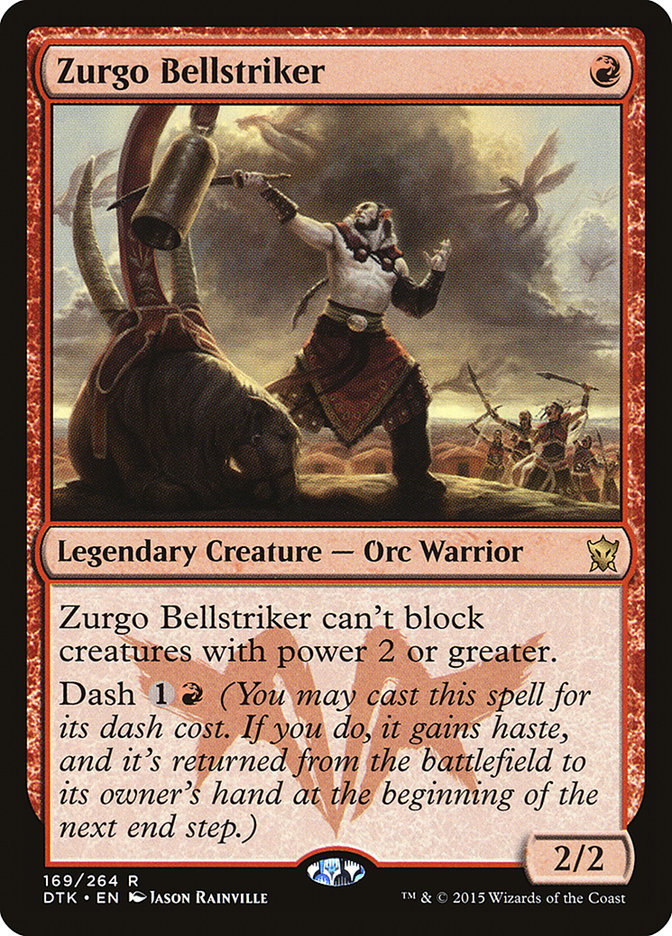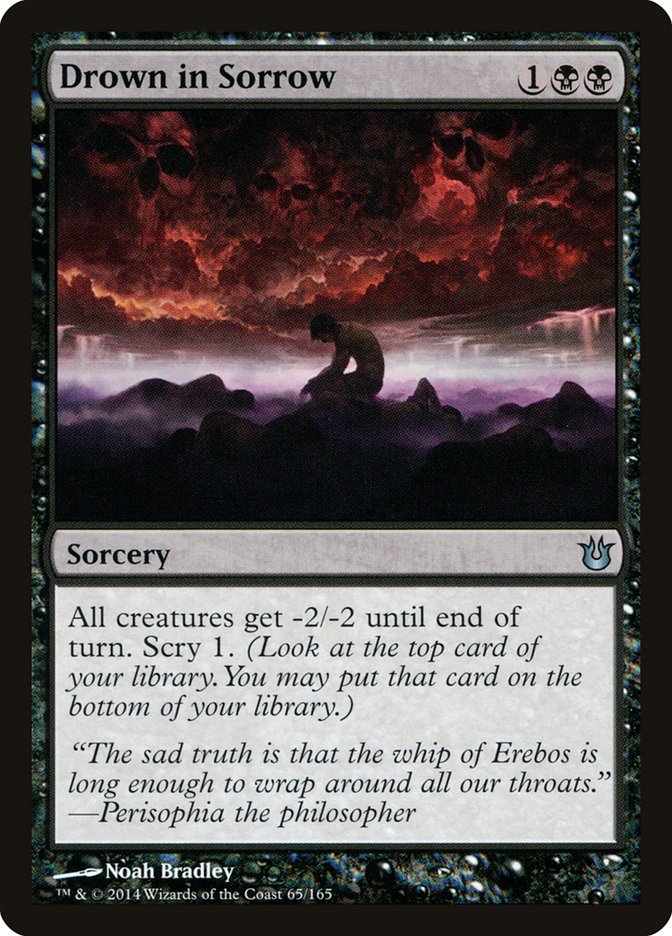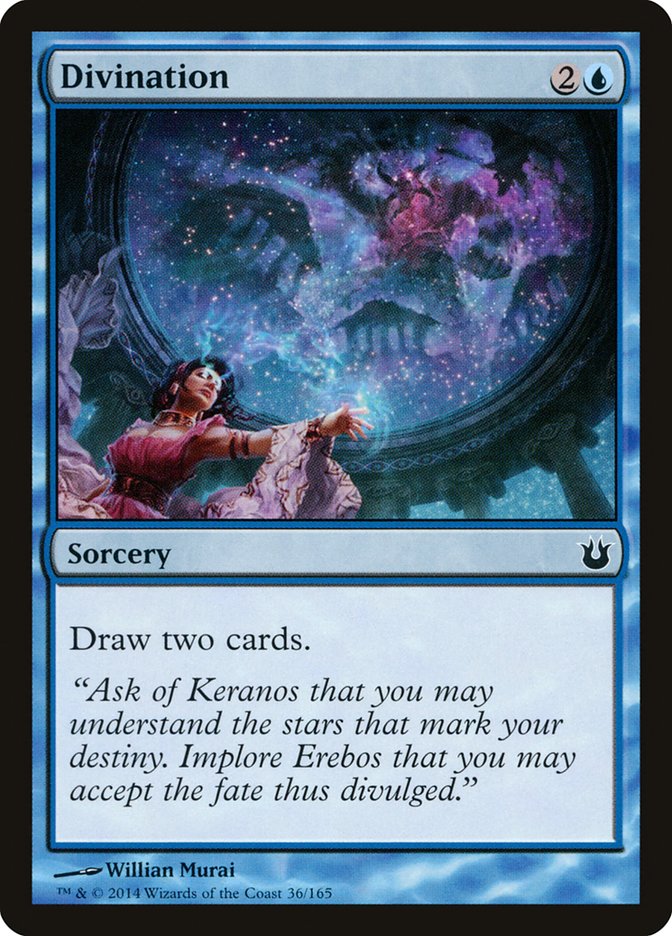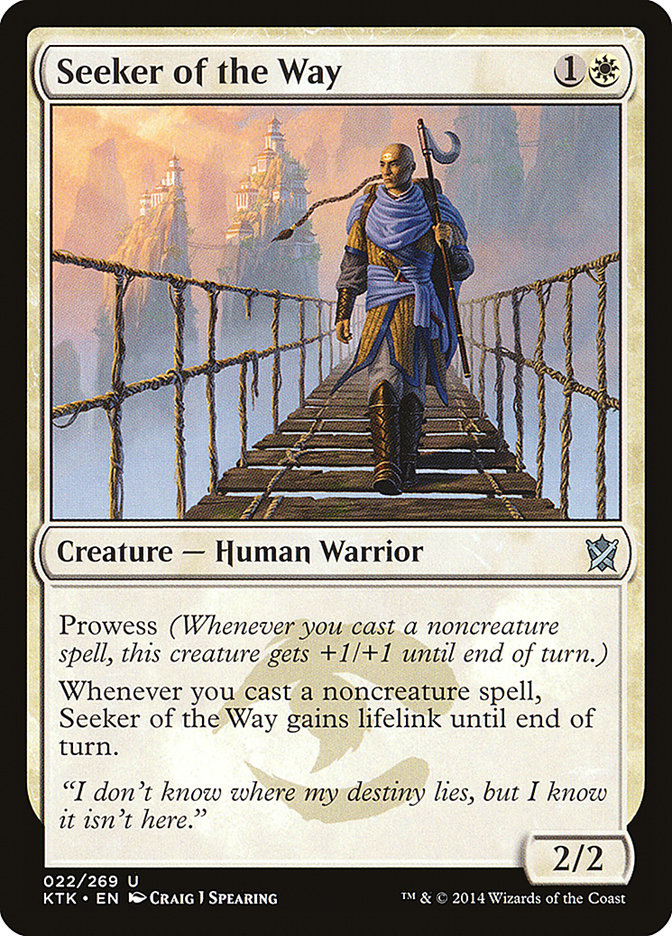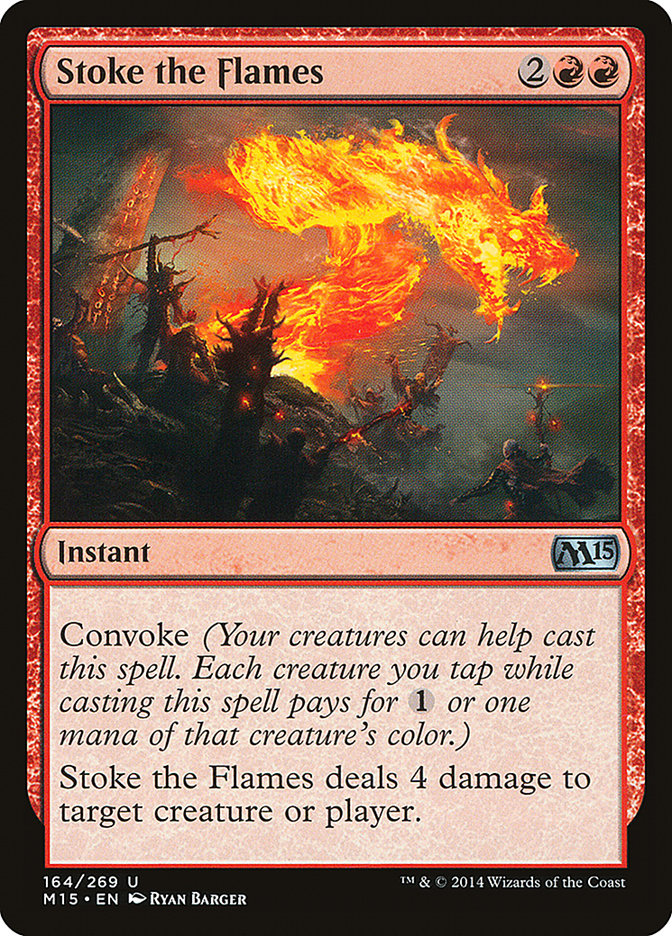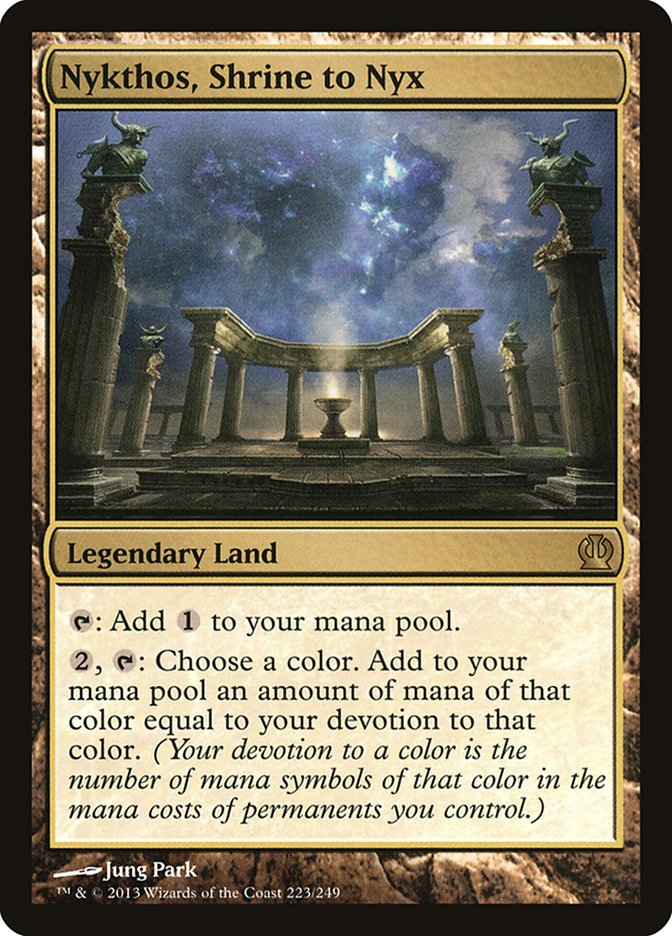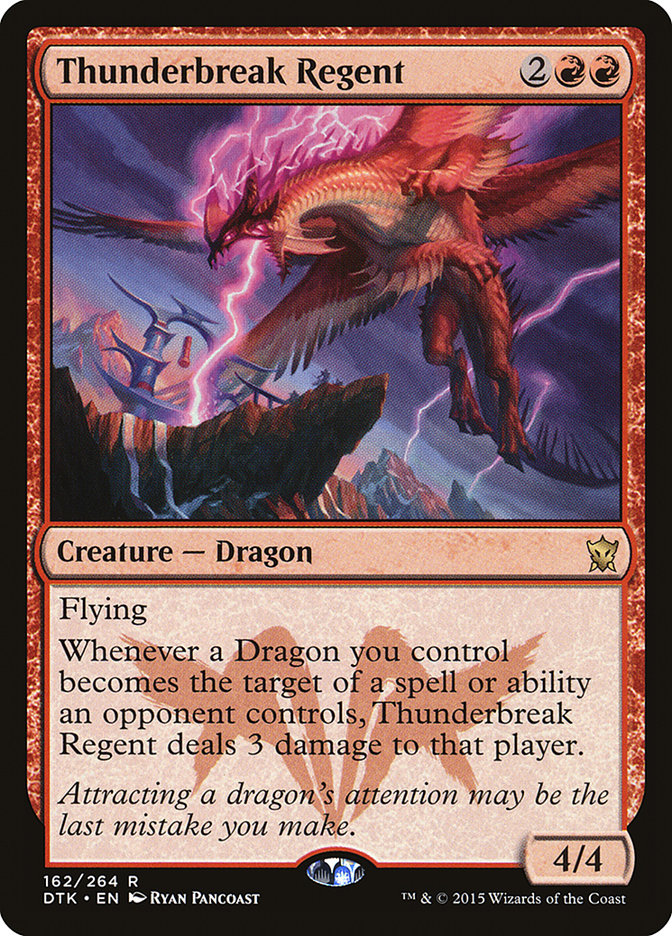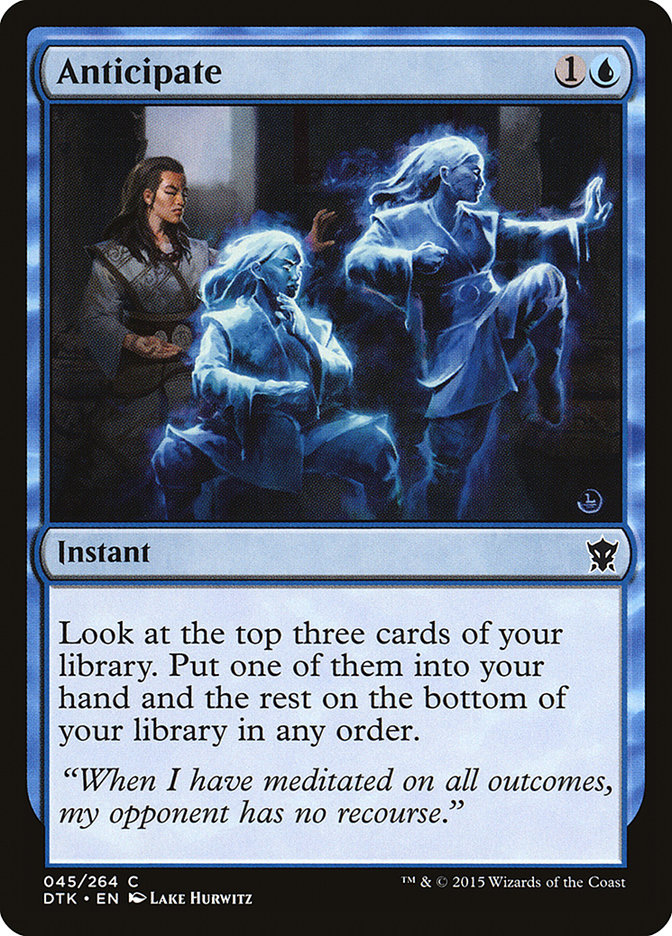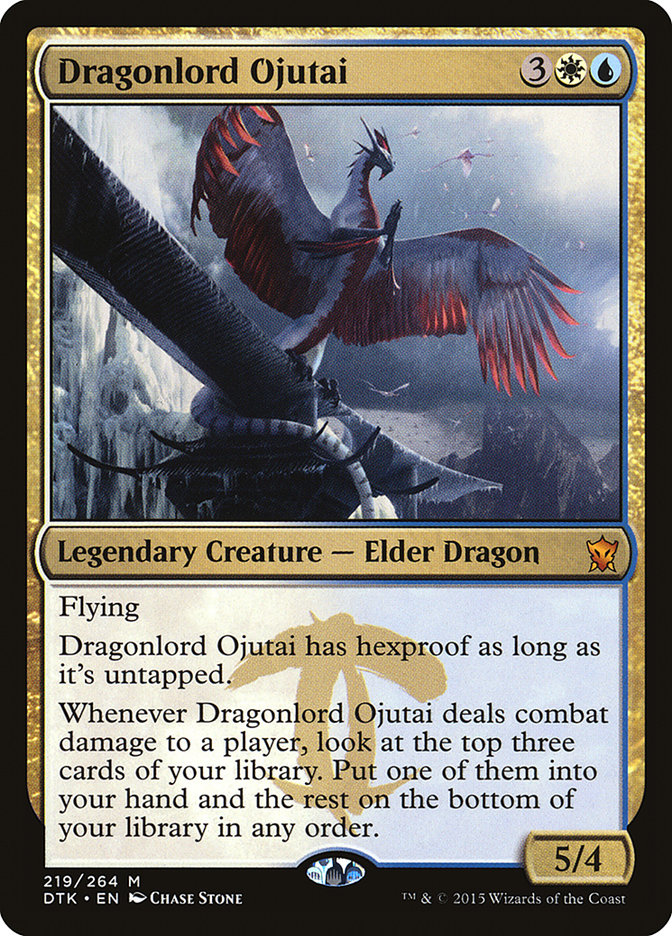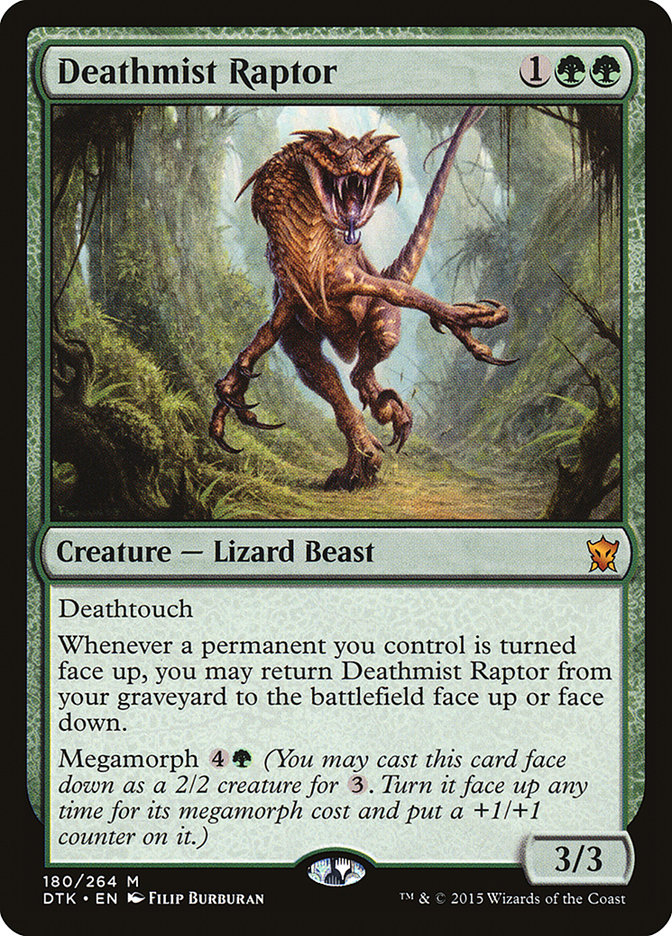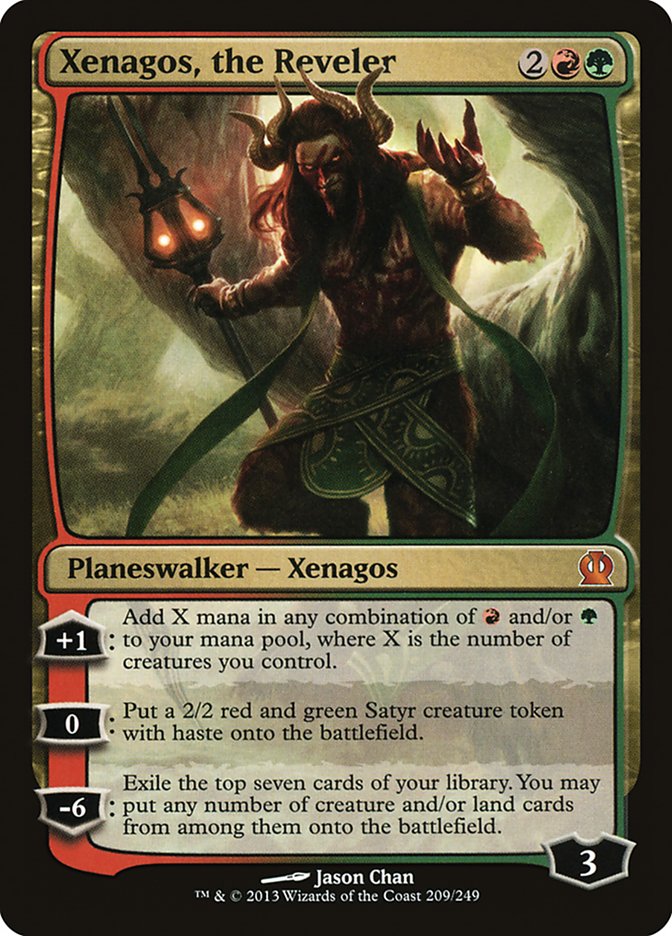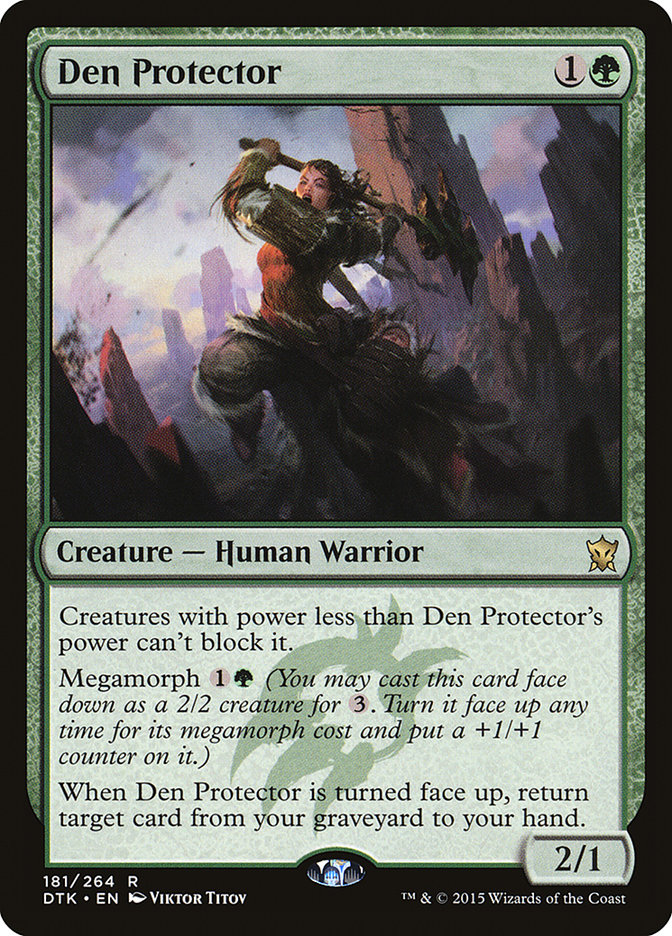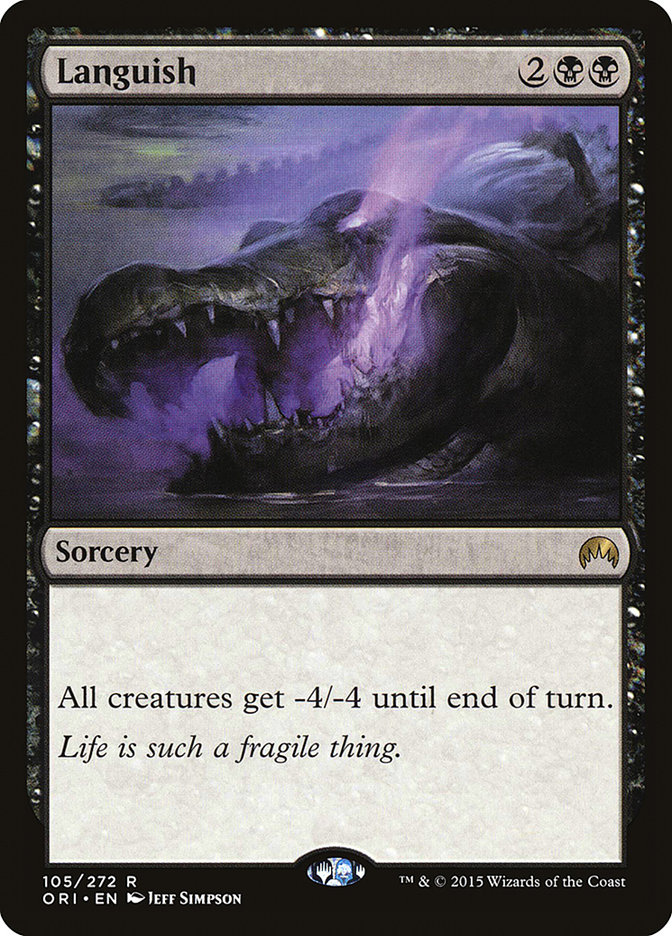There are several control decks in Standard right now. You have counterspell-based control like my classic U/B Control or like Esper Dragons. However, you also have other control decks, like Abzan Control (either with or without a Megamorph package), which essentially takes control from a midrange angle and just dominates the board with relevant, powerful permanent after relevant, powerful permanent.
One of the things that these kinds of decks live or die on is their ability to be correctly targeted towards the metagame. A deck that takes the stance of “the answer” needs to be correctly listening to the metagame for whatever the current “question” is. A long time ago, Pro Tour champion David Price (aka “King of the Qualifiers” and “King of the Beatdown”) was widely quoted as having said this:
“There are no wrong threats, only wrong answers.”
Either a card is a threat or it isn’t. From the beatdown perspective, if you have successfully chosen a threatening card and put it in your deck, it doesn’t matter which collection of those cards you draw in your opening hand, it just matters that you draw them. Control doesn’t get to be that lucky.
One of the awesome feelings when you are playing a control deck in current Standard is that if you are hitting that midgame point where you’ve weathered the early storm, things begin to feel very unfair. Every time you draw a land as the control deck, if you already have other good cards, that land is a good draw. Every time your opponent draws a land in that place, it’s generally bad. Every time you draw another answer, it is a good draw. Every time your opponent does, it’s generally bad. The first time Brad Nelson picked up my deck, he told me, “Wow, I didn’t realize just how quickly you can run people out of gas.” That’s the strength of the truly controlling deck: your opponent needs to draw threats, and you’re basically fine drawing nearly anything so long as you draw something.
Of course, you can still draw the wrong answers. Spoiler: I lose this match.
In the final turns of the game, Zurgo Bellstriker keeps getting dashed at me, knocking me down turn after turn. Meanwhile, I have the very wrong answer.
The difference between having your control deck win or die comes from a careful balance of the right threats, aimed at whatever the specific metagame of the moment happens to be. I’m going to walk you through my own choices with my deck of choice, classic U/B Control.
The Baseline
Any controlling deck has the baseline from which it operates. This is the spot at which it is operating at its core. The specifics beyond this are the details that make the deck specific to a time and place, but the core of the deck is what gives it its essence. For U/B Control, that core probably looks something like this:
2+ Ashiok, Nightmare Weaver
1 Liliana Vess
1+ Ugin, the Spirit Dragon
2+ Perilous Vault
2+ Sweep spells like Drown in Sorrow, Aetherspouts, Crux of Fate, or Languish
2+ Cheap removal like Bile Blight, Ultimate Price, or Pharika’s Cure
4+ Less-cheap removal like Hero’s Downfall and Silence the Believers
4+ Counterspells like Dissolve, Dissipate, Negate, or Clash of Wills
3+ Dig Through Time
3+ Extra card draw/selection, like Jace’s Ingenuity, Divination, Anticipate, Dragonlord’s Prerogative, and Interpret the Signs
26+ land
This is just how I view the baseline of the deck that I’ve been playing since Sphinx’s Revelation left the format. Frankly, I haven’t felt that it was the right call to play any other deck besides this one for the whole time. So long as you aim the guns in the right direction, this deck feels like an excellent call to make.
Fate Reforged On…
Of course, few people felt this way other than me. My own teammates on Team UltraPRO widely believed that my deck was probably the best-built deck for the Pro Tour, but it was just too difficult to pilot to a winning result. When you are living or dying by narrow margins, this can absolutely be the case.
After a finish like the Pro Tour, those narrow margins don’t go away; if anything, they get more important because not only are people more prepared for how your deck operates, but the very decks that they are playing are all that much more tuned and powerful as well. Still, I stuck it out, and since the beginning of 2015, I’ve had these finishes:
PTQ Fort Wayne, IN: 1st
Grand Prix Memphis: 16th
Pro Tour Dragons of Tarkir: 4th
Grand Prix Toronto: 164th
TCG Player 2015 Invitational: 7th
Grand Prix Providence: 44th
I said “Fate Reforged On,” up above, because this is a deck that practically has no Dragon’s of Tarkir in it. All there is for the deck is a single Dragonlord’s Prerogative, but other than that, this deck has been the same for a while now.
At each event, the metagame we needed to aim at was always something a little different. I’m going to look at each one in turn, to see what lessons we can glean from each.
PTQ Fort Wayne
Here is the deck I played in Fort Wayne, just before Fate Reforged was available:
Planeswalkers (5)
Lands (27)
Spells (28)

The targets: Abzan Aggro and Abzan Control were enemy number one.
Notables off the baseline: Despise has to look a little interesting. Despise was attempting to be a painless, maindeckable Thoughtseize. A lot of testing had shown that Thoughtseize was just too painful to run in the maindeck, and that doing so would contribute to losing against the most aggressive lists. Even so, the deck wanted a little bit of “cheap control,” and Despise was as good as it got.
In the ten matches, I lost one round, to G/R Aggro, barely beating the exact same player in the semi-finals despite a mulligan. I feel like a lot of this win I owe to some decisive losses against this deck in prior events, which required me to figure out a specific plan to beat G/R Aggro.
Despite that decision, I didn’t focus the lasers of the deck on G/R Aggro so much as decided that I wanted to have a plan in mind for the matchup. The true enemy was Abzan, and I never wavered from aiming at those decks dead in the eyes.
Grand Prix Memphis
By the time Memphis was around, Fate Reforged had changed the game and Ugin had come into the deck. His presence was, of course, world-changing. In addition to Ugin, Crux of Fate had joined in the mix of potential control cards. Here is what I played in Memphis:
Planeswalkers (5)
Lands (27)
Spells (28)

The targets: Abzan Aggro and R/W Aggro.
Notables off the baseline: Dissipate had snuck into the deck, largely because I was simply looking for another card that was a hard counterspell. I’d just watched Adam Jansen win a PTQ with his take on U/B Control, and I believe he may have had two Dissipate. Needless to say, I was impressed, and integrated it into my deck.
The deck shifted in a few other ways as well.
These cards went to the sideboard:
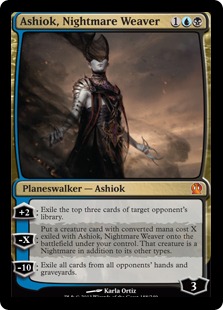
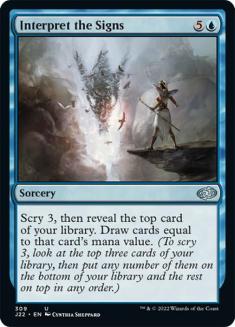
These cards just went away from the maindeck:

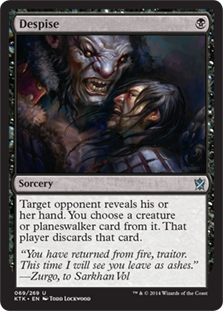
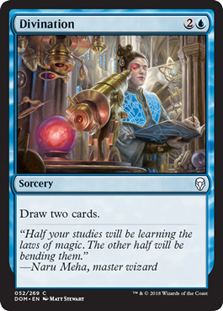
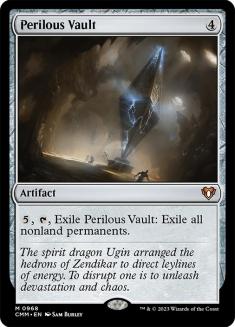
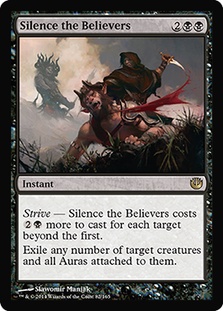
This made room for:
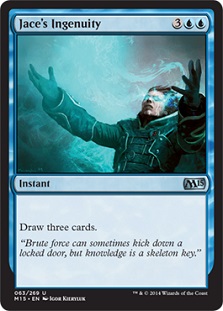


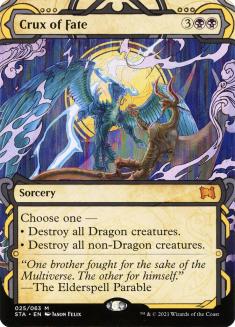
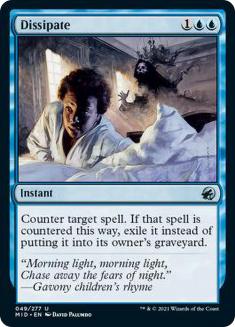
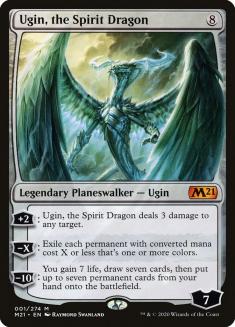

The sideboard otherwise lost:
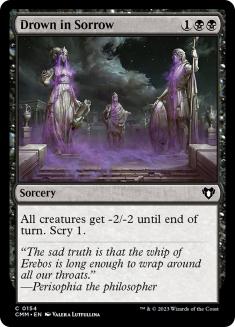


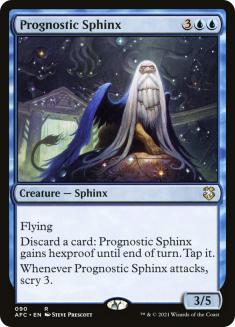
And, aside from the cards above, it gained:

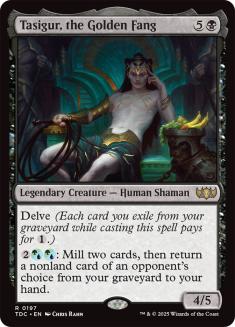
This was a pretty complicated series of swaps, in essence designed to make the deck better able to make use of Ugin, the Spirit Dragon. I hadn’t really been a believer in the card, but my experience at the Super Sunday Series in Seattle combined with my time watching Adam Jansen’s deck play out had made me a believer.
In addition, I think it is important to talk about this card:
I loved this card. In a way, it was exactly what the deck wanted as a one-of. It helped the deck resist Thoughtseize. It acted like a much more powerful Temple in some ways. In the midgame, it would be a part of why you would outperform other controlling decks, because you’d have this tiny little burst of gas that the other player wouldn’t have.
But it was too devastating to draw against any deck that had Goblin Rabblemaster. With R/W Aggro as one of the clear default opponents, you could no longer afford to be able to let this happen. Something had to give, and this was one of those things.
Pro Tour Dragons Of Tarkir
At this point, heading into prepare for the Pro Tour, I knew that I was on U/B Control before the first spoilers were even out. Unless the world radically shifted, this was the deck for me.
Of course, as always, there were some minor changes to make:
Planeswalkers (5)
Lands (27)
Spells (28)

The targets: Abzan Midrange, G/R Dragons, Red Aggro, Green Devotion
Notables off the baseline: Two Silence the Believers is a big claim. This choice was essentially saying that we expected to see a lot of Dragons. In addition, Team UltraPRO’s Sam Black was basically high on Den Protector + Deathmist Raptor decks, and we expected other people to similarly be discovering the power of these two cards. Having a card that was simply antagonistic to those cards seemed correct.
Here is how the deck shifted from the previous event.
I removed:




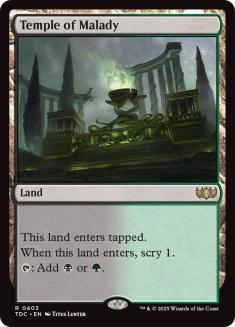
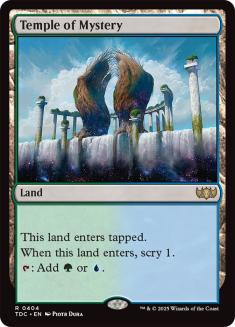
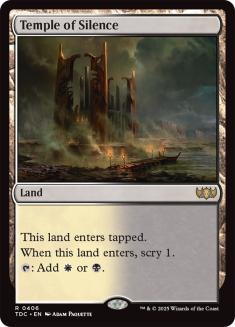
I added:


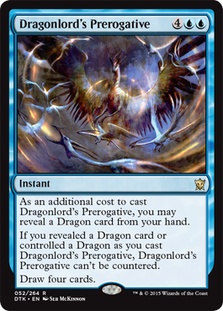
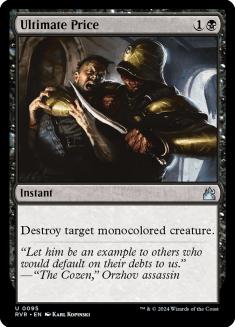
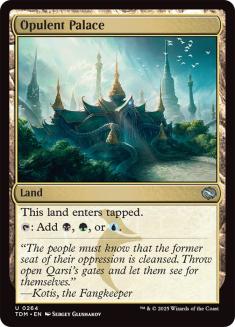

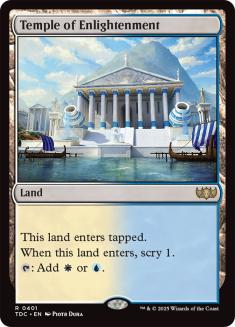
The sideboard removed:


Replacing them with:


First of all, you can see the shifting of a Drown in Sorrow and a Negate to the sideboard to be an acknowledgement that we expected the world to be about heftier creatures. This is a part of why you see those Silence the Believers in the maindeck.
Secondly, though, the deck actually just had an out-and-out error in it that I hadn’t caught yet. The lands were slightly off. I wanted the white and green sources so that I could activate stolen creatures that I’d taken with Ashiok. However, I hadn’t yet realized that the correct mix of lands should all be working with another card, Tasigur, the Golden Fang. In sessions with Team UltraPRO teammate Matt Severa, I suddenly realized that I needed to have Temple of Silence get the heck out of there. Amusingly, he independently determined the same thing and informed me of it just as I was changing the card around.
Dragonlord’s Prerogative, in essence, worked as a semi-Interpret the Signs at instant speed, with one Jace’s Ingenuity being “upgraded” to a Prerogative. This actually took a lot of testing, and again, it was Severa who finally made me certain that this was the card to play between a maindeck Interpret the Signs and another Jace’s Ingenuity. Still, Ingenuity was important as a cheaper card draw spell, and so there were still a few of those in the deck.
Silence the Believers and Ultimate Price put the deck in a position where the midrange decks were just completely outclassed, unable to really develop anything meaningful in a drawn-out game, especially when paired with the other removal. At the same time, the deck was very resilient against Red Aggro, with only decks that were very heavy on Dash seemingly having a chance. By the end of the PT, most of the team had this deck at about 75% to beat Red Aggro, and that was with them piloting it (including their claims that they were no good at the U/B deck).
Grand Prix Toronto
Here, I had a huge stumble for the deck. I started out 7-2 at the Grand Prix and then ended up hitting some wretched matchups and watched the wheels fall off. At this point, I had been doing a ton of testing on the deck and had somehow managed to trick myself into re-trying a card I had long since abandoned:
Oh, Anticipate. This card was actually the card from Dragons of Tarkir that I had believed was going to make the big splash for the deck. I had initially started out, in true Cuneo fashion, with four Anticipate. Fairly quickly, though, I’d abandoned them completely.
Here was the deck as of Grand Prix Toronto:
Planeswalkers (7)
Lands (27)
Spells (26)

The targets: Esper Dragons and Abzan Megamorph
Notables off the baseline: 4 Ashiok, Nightmare Weaver / 4 Perilous Vault; this is a return to the past in a lot of ways. Because the world had emerged as a world full of both control and slow Abzan, it seemed like we had gone back to the world where the classic Ashiok/Vault plan was correct.
The changes from the previous build require something to give in order to fit things in.
Here is what was removed:

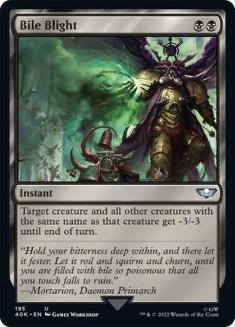






It was replaced with:




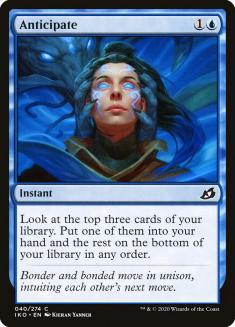



The sideboard removes:



It adds:

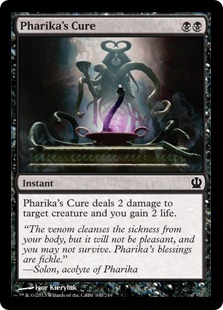

I actually view this iteration of the deck to be basically a mistake. If you look at what has been done to the deck, the baseline of removal has been cut so far down that it feels pretty dangerously low. It relegates all of the removal choices to the sideboard and leans slightly on Anticipate with the idea that this will help it flexibly handle whatever comes at it.
The reason this was a mistake had nothing to do with hitting the right metagame or not. I actually pretty accurately predicted the metagame. The problem was that I wasn’t really coherently targeting things enough. I was hedging. The Anticipate is a great bit of evidence for that. What I should have had was a deck that directly was set up for a great game one and a great sideboarded game against the decks I was after. Instead, I was just slightly aiming at them, and slightly aiming at other decks as well, all with the cost of greatly weakening myself versus aggro decks of all stripes.
Frankly, I got what I deserved with my mediocre finish.
TCG Player Invitational And Grand Prix Providence
With both the TCG Player Invitational in Las Vegas and a Grand Prix in Providence coming up, I was resolved to solve these problems. I wanted to be targeting a slightly different set of targets, but I also wanted to be coherent about it. No more hedging, no more Anticipate garbage.
I think I succeeded.
Here is what I played in both events:
Planeswalkers (7)
Lands (27)
Spells (26)

The targets: Esper Dragons, G/R Devotion, Abzan Megamorph
Notables off the baseline: 4 Dissolve, 1 Negate, 1 Dissipate. While I hadn’t gone up to Memphis levels of countermagic, I had still really upped the counts. What it felt like was that the deck wanted to be having quite a few, in part because Negate seemed well-positioned as a decent card against most of the aggressive decks as well as a good card against the slower decks. I’d missed the extra Dissipate against basically everyone, and with Deathmist Raptor seemingly an important target, maximizing the good cards against Raptor was a goal, though ultimately my last cut was the fourth Perilous Vault.
In terms of changing the deck, again there were significant changes. Here is what I changed from Grand Prix Toronto, removing:



In their place, I played:



The sideboard removed:

It replaced it with:

This is only a minor nudge in a lot of ways, but in so doing, the deck is just more versatile, at the cost of hurting its truly aggressive matchups.
In a lot of ways, this is because of this card:
Deathmist Raptor is just such a great Magic card that I felt like it was forcing the best aggressive decks out of the metagame. Collected Company was similar, existing like a kind of extra hurdle for anything aggressive to overcome. It’s just very hard to be able to successfully beat down right now, and I thought I’d rather be set up against those decks after sideboard rather than presume that they existed in strong numbers.
Overall, this plan felt very good. In Las Vegas at the Invitational, I felt like my losses largely came down to mistakes or bad luck. In Providence, my four losses could be summed up as this: two mistakes, one horrid matchup, one bit of bad luck.
The two match-losing mistakes hurt pretty badly, but I certainly recognize that that is the cost of playing my deck: there isn’t all that much in the way of forgiveness in the deck. Still, I think it is the best deck choice in the format for anyone who is practiced with it.
As far as the metagame ended up, I feel like I hit the nail pretty close on the head, though Esper Dragons was closer to absent.
Moving Forward
After this last Grand Prix, it seems like we’re going to be seeing a lot more of the same, at least until Magic Origins comes around and changes things. One of the things I was fairly pleased to see was that Jeskai Aggro didn’t break into the Top Eight. If this deck had managed to make a big splash, I would have been forced to find a solution for the newest version or simply abandoned ship on U/B Control.
As it is, though, my current build of the deck is exactly the same 75 that I played at the last two events. I think the world isn’t significantly different to make any real changes.
I do know, though, that I expect to make some big shifts soon.
Sure, it’s only one card, but it might just change the world. Sometimes one card is all it takes.
If you’re working on a control deck of any stripe, one of the things that you need to always be aware of is where everything is at in the metagame. Decks don’t just live in a vacuum. For each event, the specifics of the deck need to be worked on and tailored to a metagame.
A proactive, aggressive deck needs to do this as well, but not nearly with as much care as a control deck. This is just because of the nature of how these decks work. If you’re making people react to you, the base of your deck is going to be made looking for synergies and powerful cards internal to your own deck. Some of the touches you make on the edges, like which interactive spells you choose, these require thinking about the metagame. For an aggressive deck, that is only a portion of what you’re doing.
If you’re a control deck, reacting is the core of what you do. As such, aiming at a specific metagame is central to how you have to think about building your deck. To do otherwise is to simply fail to unlock the true potential of whatever controlling archetype you’re playing.
Don’t make that mistake. Place the metagame at the center of your control decks and reap the rewards. Fail to do so and lose.

